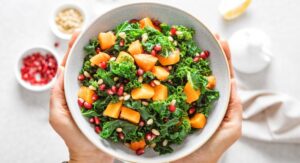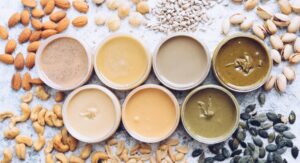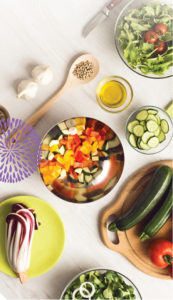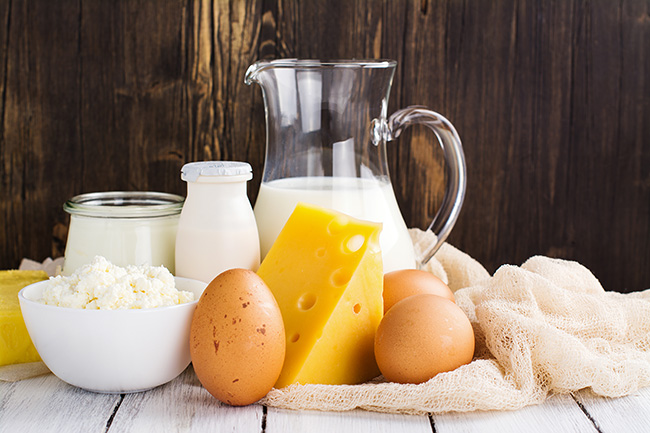Bones hold up the tissues of your body, giving it form and strength. To keep your bones strong, everybody needs to get enough calcium. Read on to learn how you can feed your bones with a great diet.
The hard facts about bones
Bones are the rigid hard tissue that we are all very familiar with – they play a critical role in giving our body form and shape.
Bones should last an entire lifetime. But to many, that is a challenge! Many older adults suffer from fractures simply because their bones have lost strength. This disease of brittle bones, also called ‘osteoporosis’ affects their mobility and quality of life.
Osteoporosis is a disease that causes loss of bone mass resulting in bones that are brittle and liable to fracture. While osteoporosis affects both men and women, the condition is more common among postmenopausal women.
With life expectancy much higher now, it makes good sense to invest in building up and maintaining our bones today – they’ll have to last that much longer!
A healthy lifestyle that includes regular weight-bearing exercises, supported by a well-balanced diet that provides sufficient calcium and vitamin D, goes a long way in helping maintain bone strength of adults. So, read on to learn how you can cement your bone’s density.
Eat a well-balanced diet
Everybody knows that calcium helps build strong bones and teeth. In reality, many nutrients work together to build and strengthen bones. Apart from calcium, nutrients that play critical roles in bone nutrition include protein, phosphorus, magnesium, vitamins D, K and C.
On the other hand, eating too much protein and sodium leads to the loss of bone density. So, to achieve optimal bone strength, eat a well-balanced diet using My Healthy Plate (as your guide).
Recommended Calcium Intake
Getting enough calcium is important regardless of how young or old you are. Calcium helps build up bone from childhood right up to the age of 30 years, making them denser and stronger. Beyond the age of 30, getting enough calcium each day continues to be important to maintain bone density. Maintaining good bone health will help you continue to stand up straight and tall throughout life.
Calcium plays many critical roles in the body and is an essential mineral for life and good health. Yet, many Singaporeans do not consume enough calcium and this puts individuals at a greater risk of developing osteoporosis. Click here to find out the Recommended Dietary Allowance (RDA) for calcium.
The richest food sources of calcium are dairy foods such as milk, yoghurt and cheese. Other good sources of calcium are fish with edible bones such as sardines and ikan bilis, tofu made with calcium salts, lentils, green leafy vegetables and calcium fortified food such as bread, biscuits and soybean milk. Eat a variety of these foods as part of your balanced diet to attain your daily calcium requirement each day.
Food | Serving Size | Calcium Content (mg) |
|---|---|---|
Dairy products | ||
High-calcium milk powder | 4 scoops (25 g) | 500 |
Low-fat milk | 1 glass (250ml) | 380 |
Full-cream milk | 1 glass (250ml) | 300 |
Low-fat yoghurt | 1 carton (150g) | 240 |
Low-fat cheese* | 1 slice (20g) | 200 |
Non-dairy foods | ||
Canned sardine (with bones) | 1 fish (80g) | 270 |
Dried ikan bilis (with bones) | 2 tablespoons (40g) | 270 |
Silken tofu | package (150g) | 100 |
Tau kwa | 1 small cake (90g) | 150 |
Dhal (raw) | 1 mug (50g) | 85 |
Baked beans, canned* | can (210g) | 110 |
Kai lan, cooked | 1 mug (100 g) | 195 |
Spinach, cooked | 1 mug (100 g) | 140 |
Chye sim, cooked | 1 mug (100 g) | 140 |
Broccoli, cooked | 1 mug (100 g) | 50 |
Calcium-fortified products | ||
High-calcium soybean milk | 1 glass (250ml) | 450 |
Enriched bread | 2 slices (60 g) | 100 |
Calcuim-fortified orange juice | 1 serving (240 ml) | 350 |
*item may be high in salt
Vitamin D and Calcium Absorption
Vitamin D helps your body absorb the calcium from your diet. Your body can make vitamin D when it is exposed to ultra violet (UVB) rays of the sun. Try to let the sun shine on your arms and legs twice a week. The best time to do so is anytime between 10am and 3 pm, for about 5 to 30 minutes. If you have paler skin, then just a little sunshine will do the trick, but if you have darker skin, stay out in the sunshine just a little longer to help your body make enough vitamin D.
To be certain to meet your nutrient goal, include eggs, liver and oily fish like salmon, cod and mackerel. Vitamin D fortified foods include selected brands of milk, soymilk, ready-to-eat-cereal and margarine. It is best to get all your calcium and vitamin D from food and sun exposure alone, but if you are unable to get enough of either nutrient, consider a calcium supplement of up to 800mg, or a vitamin D supplement of up to 200 IU (5 g).
So Remember...
- Eat a well balanced diet that includes sufficient calcium each day. Include a variety of calcium-rich food to attain your daily calcium requirement.
- Get sufficient sun exposure and include vitamin D-rich food to enhance calcium absorption from your diet.
- Enjoy a healthy lifestyle that includes regular weight-bearing exercises. Limit alcohol, caffeine and avoid smoking to maintain the density of your bones.
“Daily Calcium Intake for Greater Bone Strength” by Health Promotion Board, 3 Dec 2018, www.healthhub.sg










